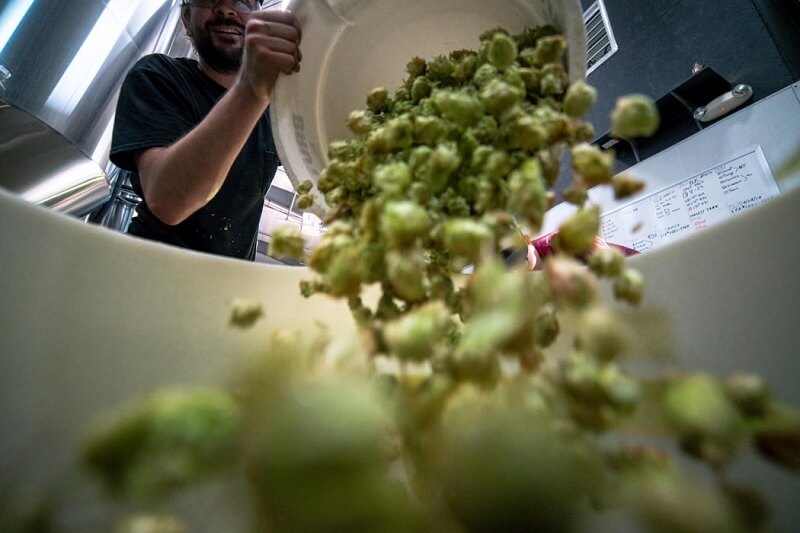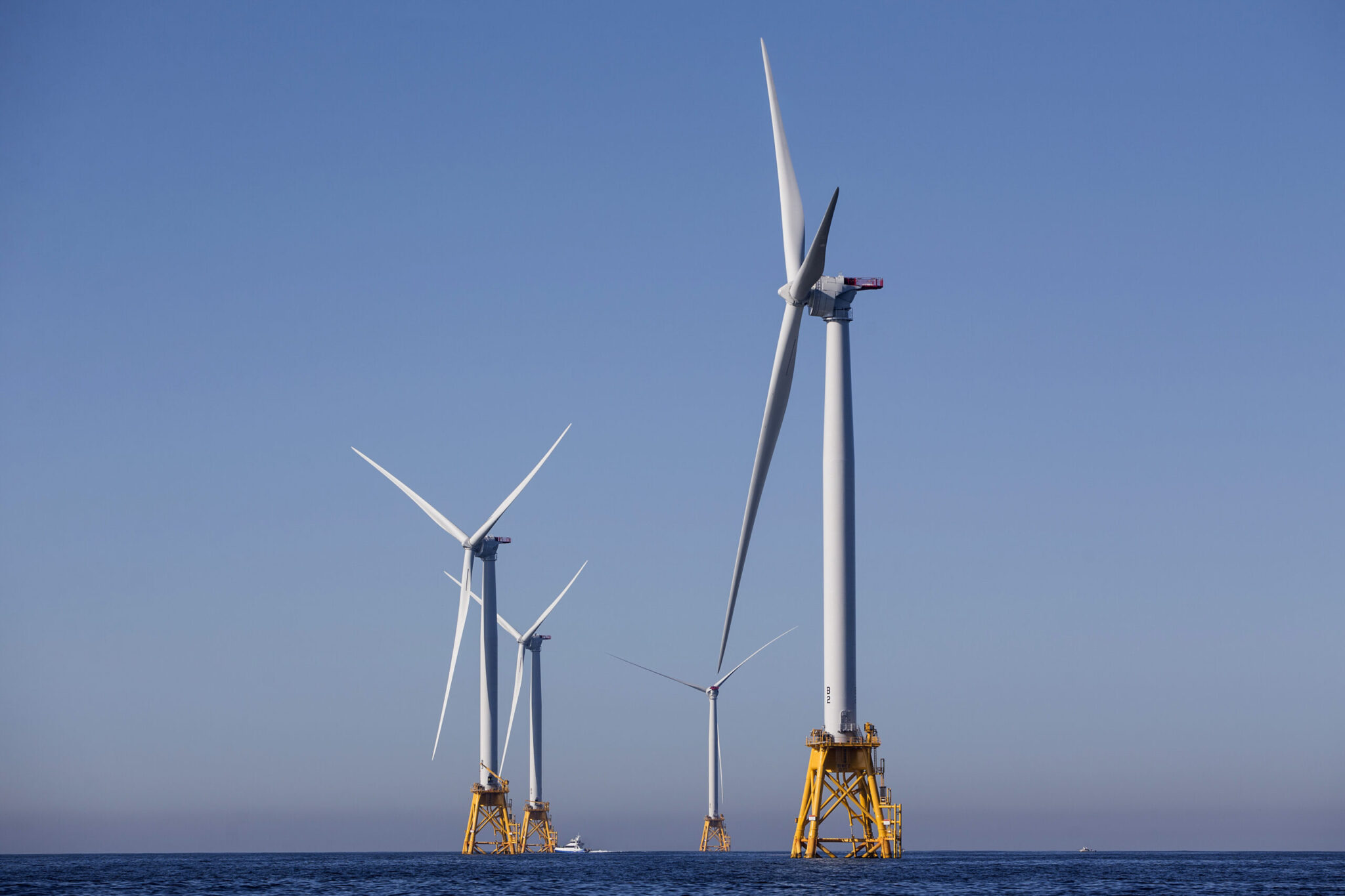Report Finds Md. Greatly Underestimated Landfill Methane Emissions For Over a Decade

Maryland has substantially underestimated the amount of greenhouse gases produced from its landfills, according to a new report by an environmental watchdog organization.
The Environmental Integrity Project, in a report issued this week, estimated that municipal landfills in Maryland released about 51,500 tons of methane and 500,000 tons of carbon dioxide in 2017.
But the Maryland Department of Environment estimated that in 2017 those landfills emitted just 12,500 tons of methane and 136,00 tons of carbon dioxide — amounts that are roughly one quarter of what the Environmental Integrity Project calculated.
After looking through a federal database on greenhouse gas emissions, Ryan Maher, a co-author of the report, said that he realized that the state had excluded five landfills and included one nonexistent landfill in its greenhouse gas emission estimations.
State officials also significantly overestimated “surface oxidation,” or a biochemical process that breaks down methane in the soil and prevents 10% of it from escaping into the air. State officials incorrectly calculated for a 90% methane reduction instead, according to the report.
“That resulted in serious underestimates,” Maher said, and these computation errors go as far back as MDE’s original 2006 greenhouse gas inventory.
Maryland’s Secretary of the Environment Ben Grumbles said he agreed with the report’s findings, and, on Wednesday, MDE subsequently updated its greenhouse gas emission data on its website.
“We agree with the group’s findings. Thanks to their input, MDE has revised all of the greenhouse gas emissions inventories going back to the original 2006 inventory. The revised estimates reinforce the need for new actions to control methane emissions from landfills and also boost efforts to reduce the amount of waste going to landfills, which is exactly what we are doing,” Grumbles said.
MDE conceded that it underestimated those pollutants due to mathematical and data-based errors.
Prompted by the environmental group’s report, MDE revised its data came out with a new estimate — 58,000 tons of methane came from landfills in 2017.
“The revised estimates also show that we have been making steady progress reducing methane emissions from landfills since 2006, so we have a strong foundation for new actions,” Grumbles said.
Sen. Paul Pinsky (D-Prince George’s), the chair of the Education, Health and Environmental Affairs Committee, said he was “speechless that we have put in the hands of the Department of the Environment, responsibility to figure out how much we’re releasing around the state and try to implement solutions — and then we come across a fairly significant screw up.”
Pinsky said he had already heard from environmentalists that the state’s methane emission numbers might be inaccurate. His bill, the Climate Solutions Now Act of 2021, would have required landfill operators to evaluate the difference between methane emission data from aircraft observations, which Pinsky contended was more accurate, and ground-level emission data reported by the landfill.
MDE would have had to disclose all methane emissions data obtained by airplane observations and any discrepancies between that data and ground-level methane emissions data on its website. Pinsky’s bill, however, did not pass the General Assembly this year.
Pinsky said that he appreciated that MDE responded appropriately to the report’s conclusions. “I’m glad that MDE didn’t cover it up and acknowledged the problem, so at least we can be happy that they’re willing to own their errors,” Pinsky said.
Methane has a warming effect that is 86 times that of carbon dioxide over 20 years, according to the report. Although methane is an extremely potent greenhouse gas, it stays in the atmosphere for just a decade while carbon dioxide can persist for hundreds of years. This means that cutting new methane emissions today will help reach climate targets more quickly.
Food waste, yard waste, paper products and other organic materials decompose in landfills and release methane, according to the report.
Out of Maryland’s 40 municipal waste landfills, the Brown Station Road Landfill in Prince George’s County emitted the most greenhouse gases, with 86,000 tons of carbon dioxide and 6,100 tons of methane. Forty West Landfill in Washington County and Quarantine Road Landfill in Baltimore City have the next highest emissions.
Landfills are the leading source of methane emissions in Maryland, accounting for 37% of the state’s overall methane emissions, according to the report. But previously, the state had estimated that only 13% of methane emissions came from landfills and that the leading source came from the natural gas industry.
Just 21 of the state’s 40 municipal landfills have gas control systems and only four are required to by federal regulations. States can set regulations for landfills that are stricter than the federal requirements, and MDE plans to hold a stakeholder meeting on municipal landfill methane regulations on June 23, Grumbles said.
Grumbles said that state regulations will go beyond federal regulations which require monitoring greenhouse gas emissions and installing gas control systems, which combust methane in a flare or into energy or heat, at large landfills.
“There are some controls at the federal and state level for the largest landfills but we aim to do more than currently required with our state regulatory proposal and also want to engage with communities and the EPA on measures for other, smaller landfills,” Grumbles said.
“Current federal efforts regarding measures for smaller landfills are voluntary [and] incentive-based, so cost and technical capability will be important discussions with our small, medium, and larger landfills. We are working closely with the University of Maryland on monitoring tools and tracking data.”
But this regulatory process, which began in March 2017, has been significantly delayed, Maher said. The last stakeholder meeting on the issue was held in September 2020.
Although gas control systems are necessary to reduce methane emissions from food waste already decomposing in landfills, the real solution is to prevent organic material from getting into the landfill in the first place, Maher said.
This year, the General Assembly passed House Bill 264, enacted without the governor’s signature, that would require large producers of food waste to compost or divert food waste from landfills and incinerators if they are within 30 miles of a facility able to accept it. That bill addresses the problem “one step earlier,” but will not be very effective until there are composting and organic diversion facilities that can accept the waste, Maher said.
Grumbles added that the state is working on reducing waste sent to landfills, namely by “establishing a new office for recycling markets, implementing new requirements for mandatory food scrap recycling at certain organizations, encouraging increased electronics waste collection, and holding a food recovery summit before the end of 2021.”
The Environmental Integrity Project urged Maryland to issue stronger greenhouse gas regulations and monitoring than federal regulations mandate, and they pointed to California’s stricter standards as a model. Under California’s rules, 28 landfills in Maryland would be required to install gas control systems, the report noted.
The environmental group also recommended that Maryland establish financial incentives to create new composting facilities that can divert organic waste from landfills.
And to prevent underestimates in the future, the Environmental Integrity Project urged Maryland to rely on direct measurements and emissions monitoring instead of using theoretical models to estimate emissions.
Editor’s Note: This story was updated to correct the sources of methane emissions in landfills.




 Creative Commons Attribution
Creative Commons Attribution